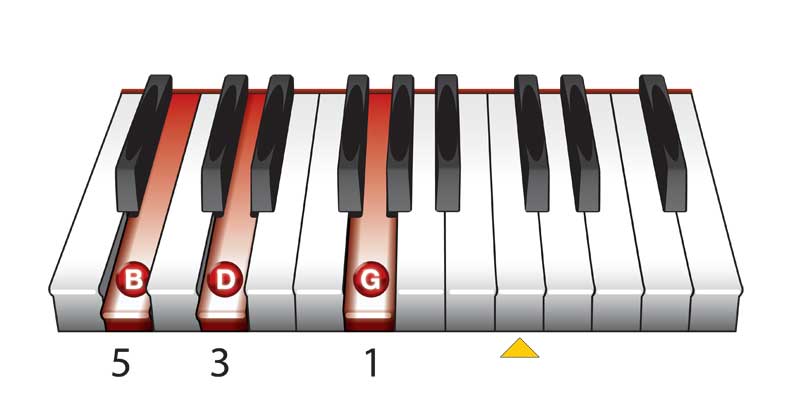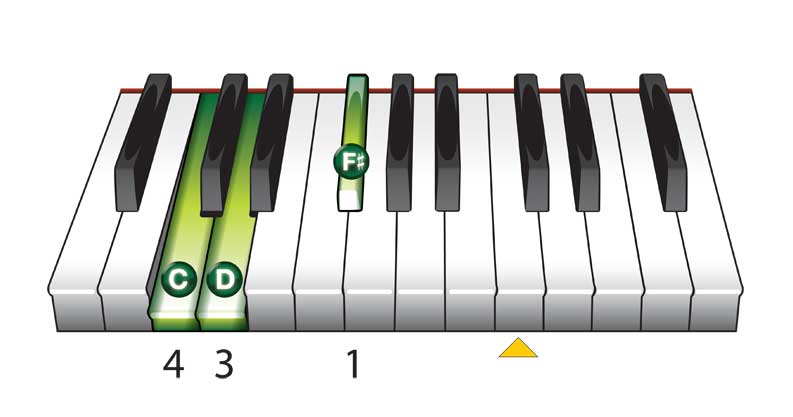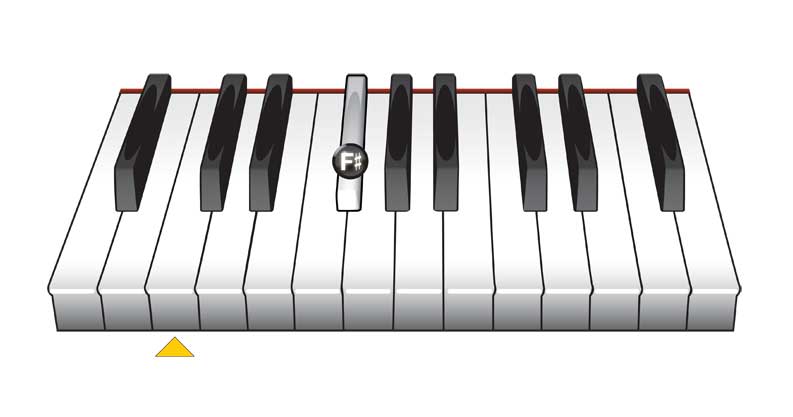
LESSON SEVEN
The G Chord
G
Chord Symbol

To play the G chord, use the first, third and fifth fingers of your left hand, as shown in the G chord diagram.
Sharp Signs
This is a sharp sign. When a sharp sign is placed before a note on the staff, it indicates that you play the key immediately to its right. This key may be either black or white.
The D Seventh Chord
D7
Chord Symbol

The D7 chord contains an F sharp note which is the black key immediately to the right of the F note (white key) below middle C. This F# note is written on the fourth line of the bass staff. To play the D7 chord, use the first, third and fourth fingers of your left hand as shown in the D7 chord diagram.
| 22 | Hush Little Baby |
This popular children’s song makes use of the chords G and D7.
| 23 | Tom Dooley |
When playing the melody of this song, be careful to play the correct timing in bars 9, 11, 13 and 15. Practice the timing in these bars separately before playing the complete song.
The Eighth Note Triplet
A triplet is a group of three evenly spaced notes played within 1 beat. Eighth note triplets are indicated by three eighth notes grouped together by a bracket (or a curved line) and the number 3 written either above or below the group. The eighth note triplets are played with a third of a beat each. Accent (play louder) the first note of each triplet group as it will help you keep time.
| 24 | Amazing Grace |
Amazing Grace is a Gospel song which contains a lead-in and triplets.
The Note F Sharp

This F# note (above Middle C) is the black key immediately to the right of the F note as shown in the diagram.
This F# note is written in the first space of the treble staff.
| 25 | The William Tell Overture |
Most of the melody notes in this song are played staccato as indicated by the dot placed under or over the note. All the chords are played staccato except for the first D7 chord in bar 7.